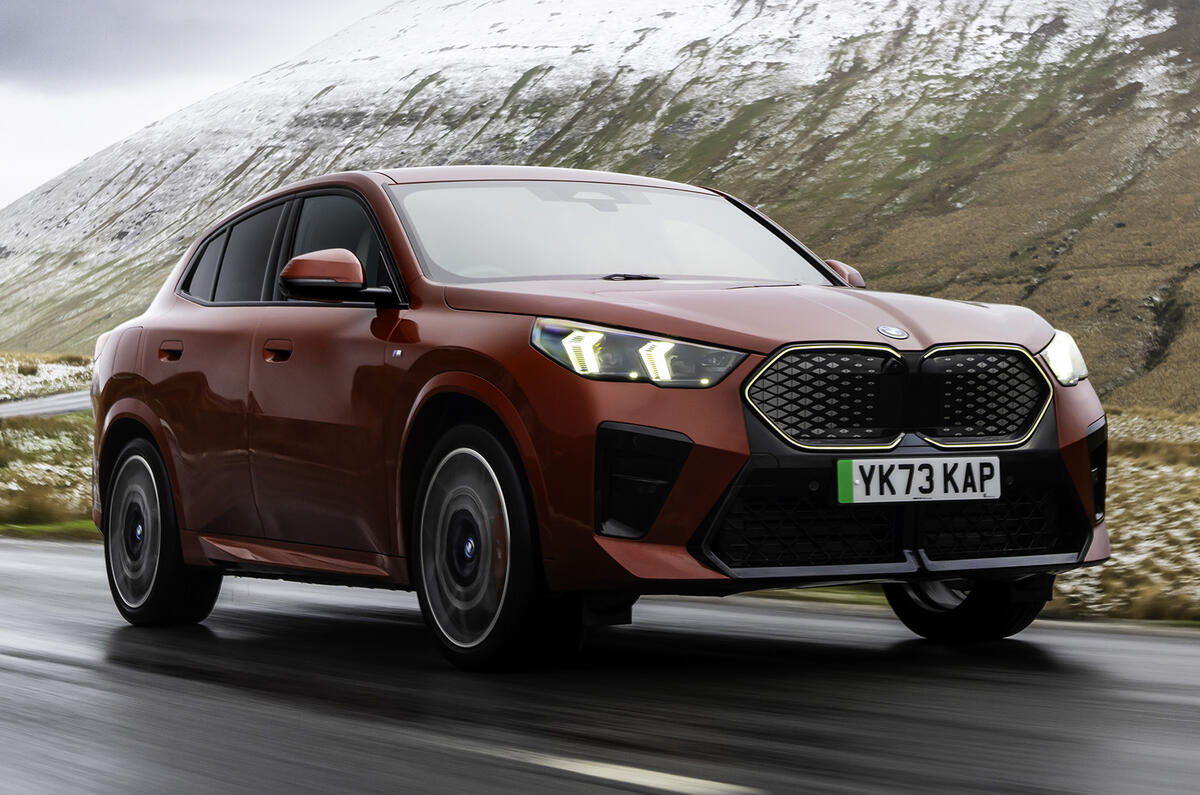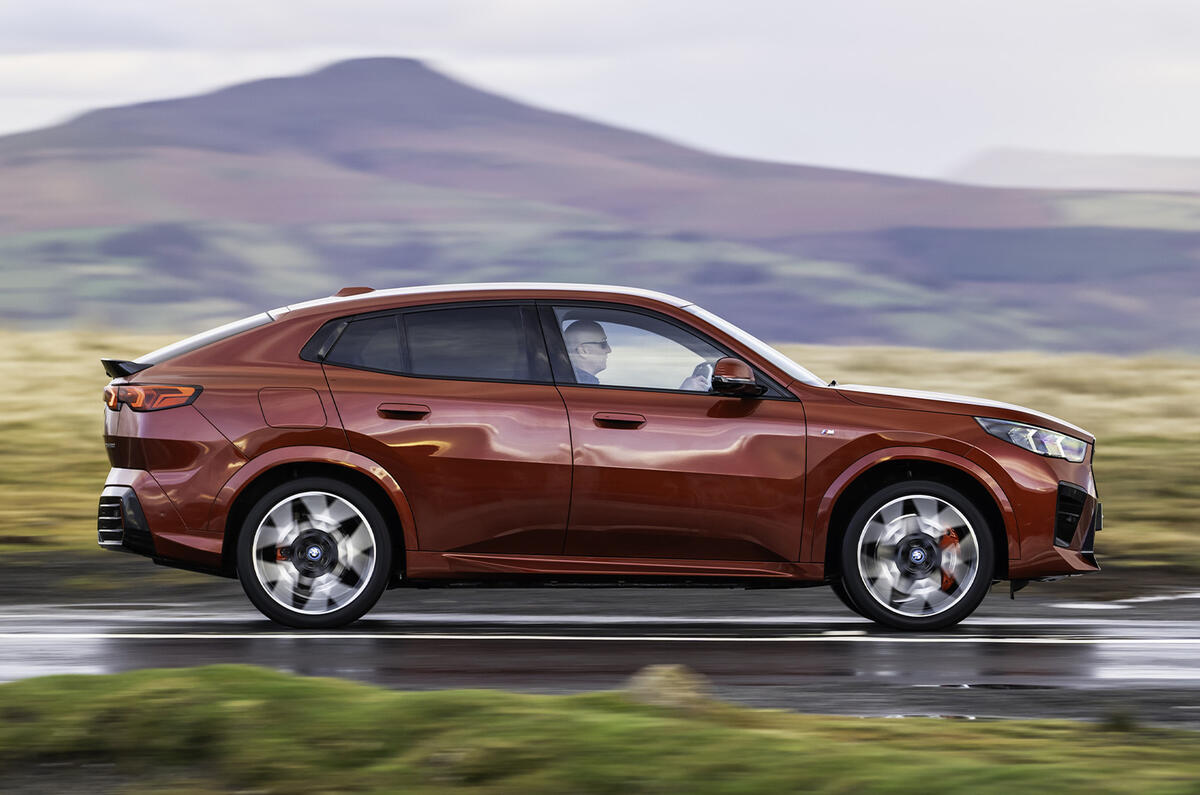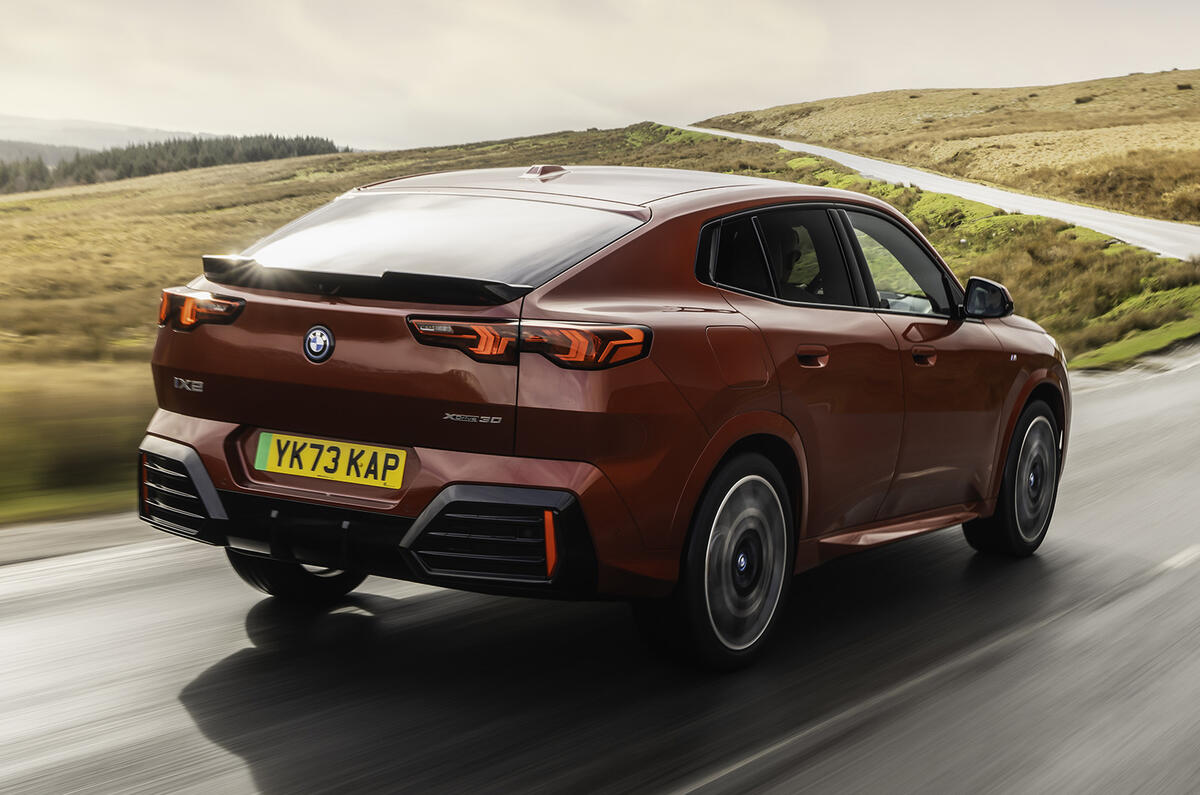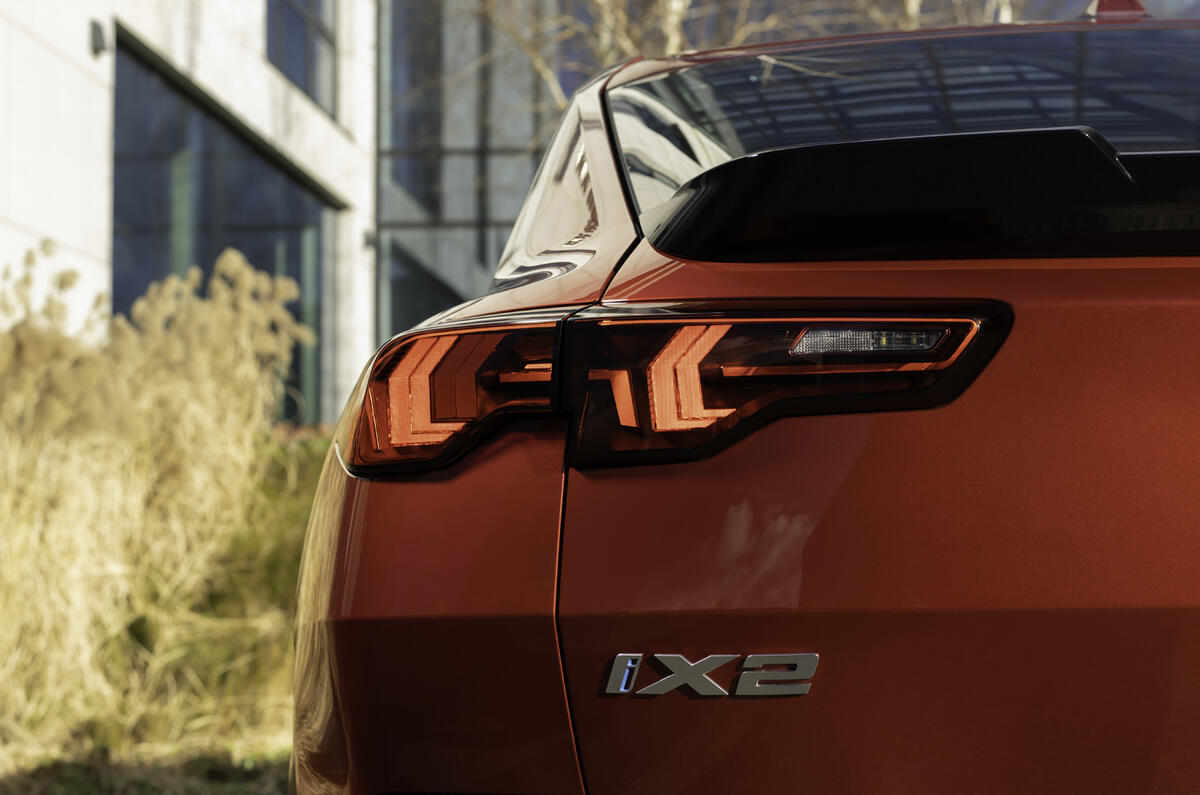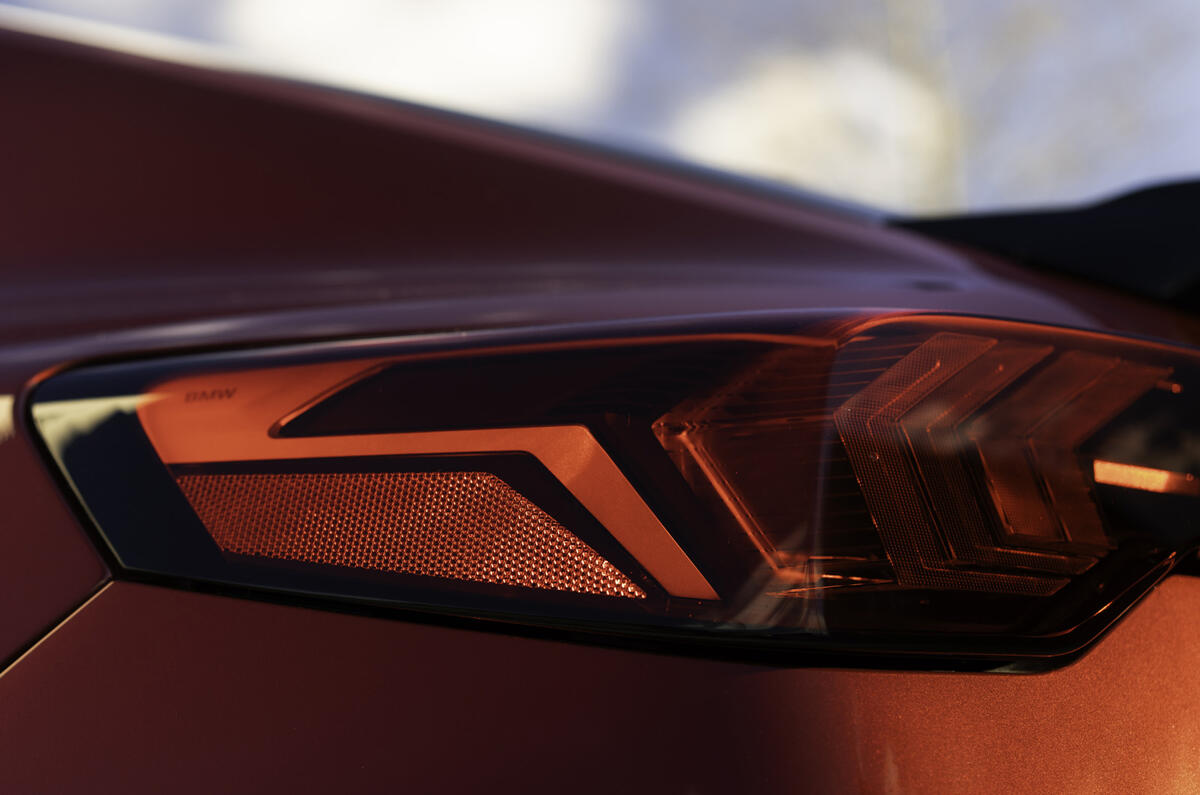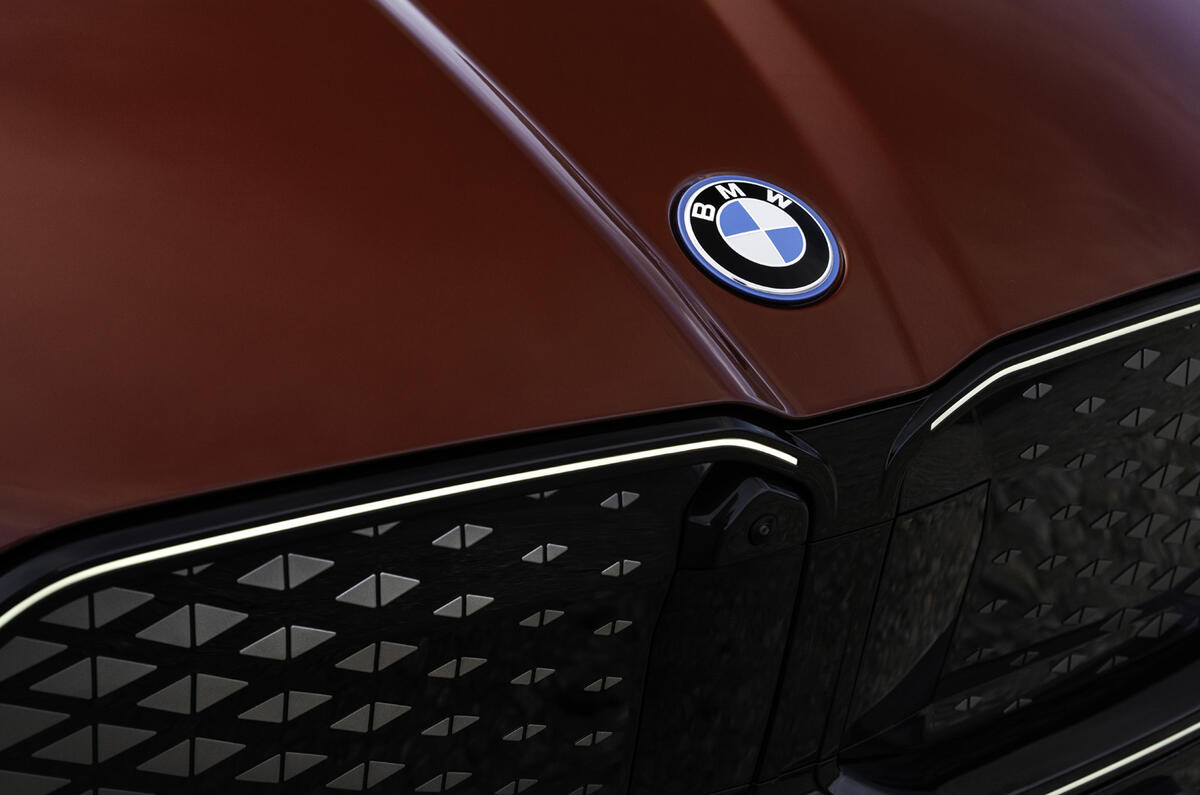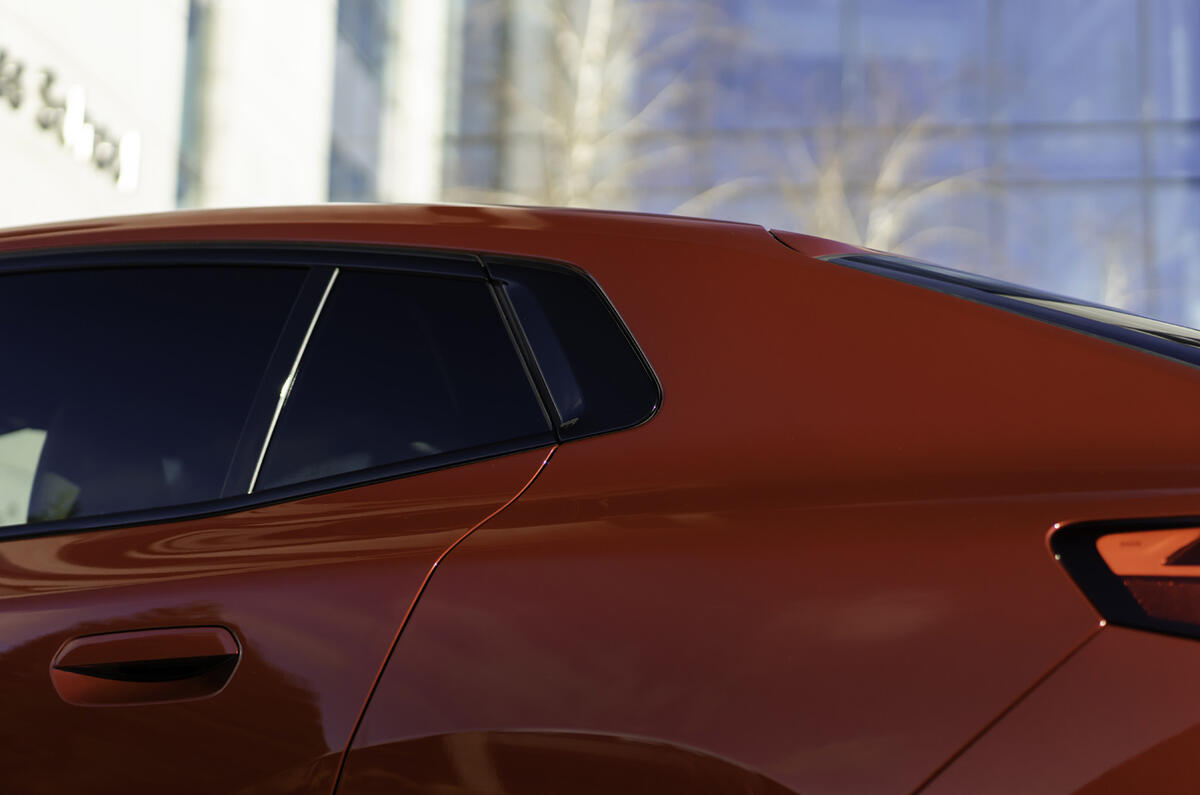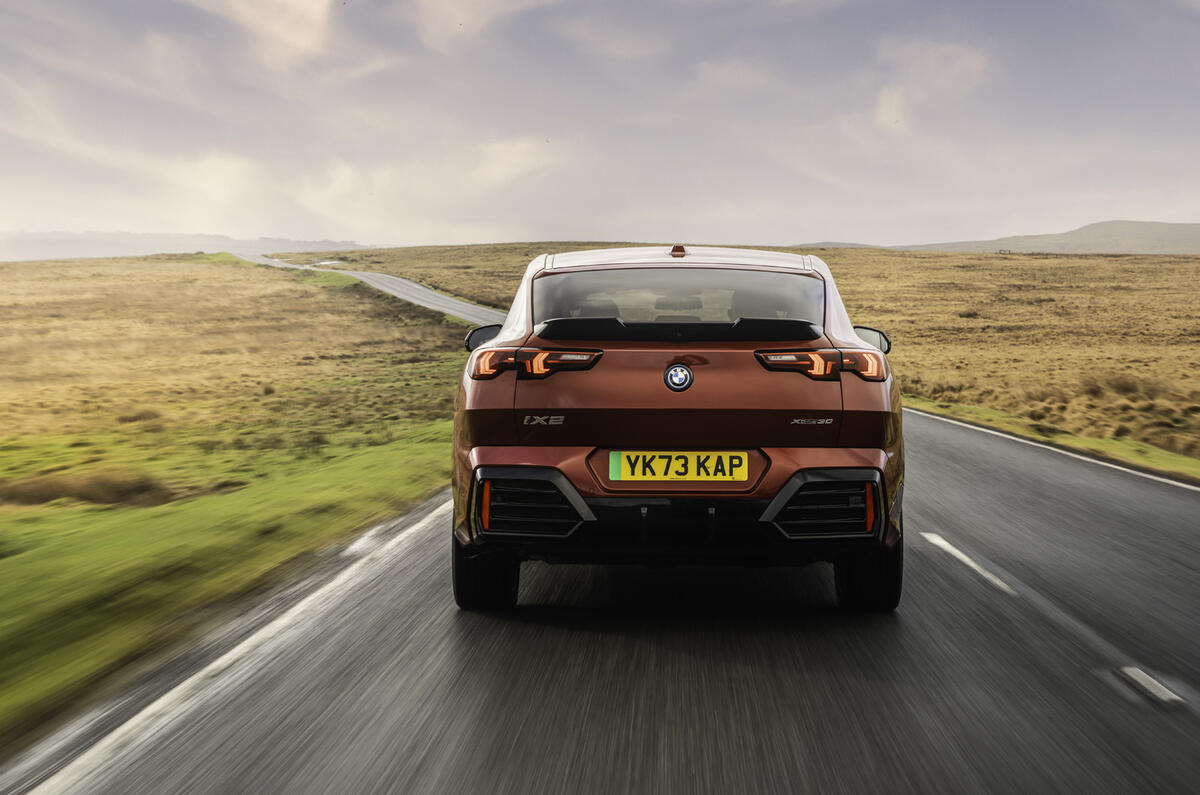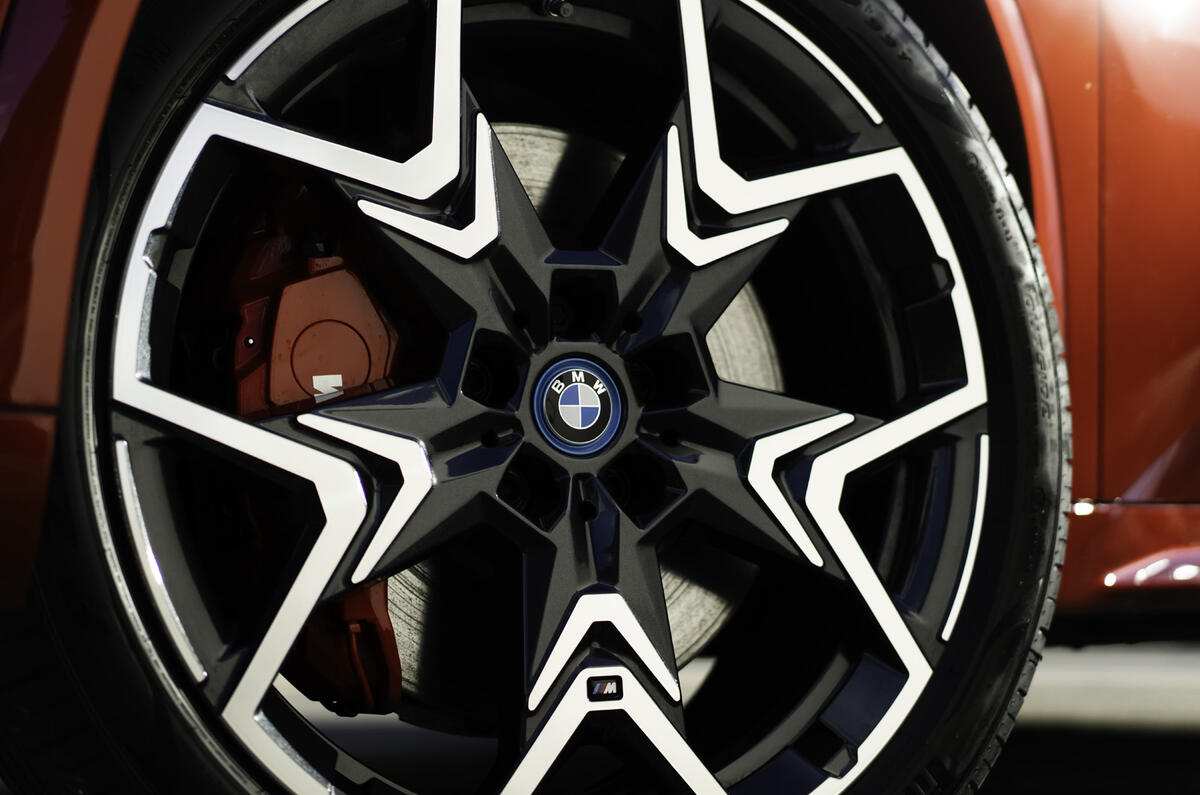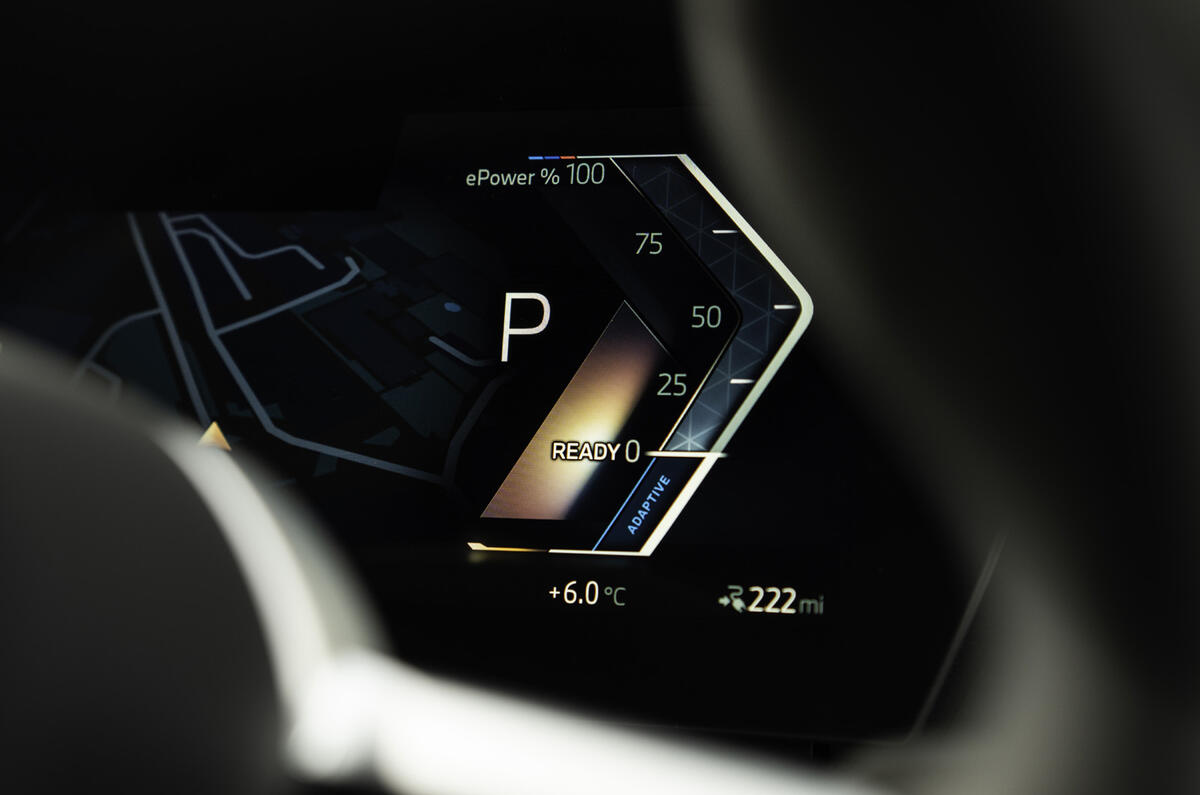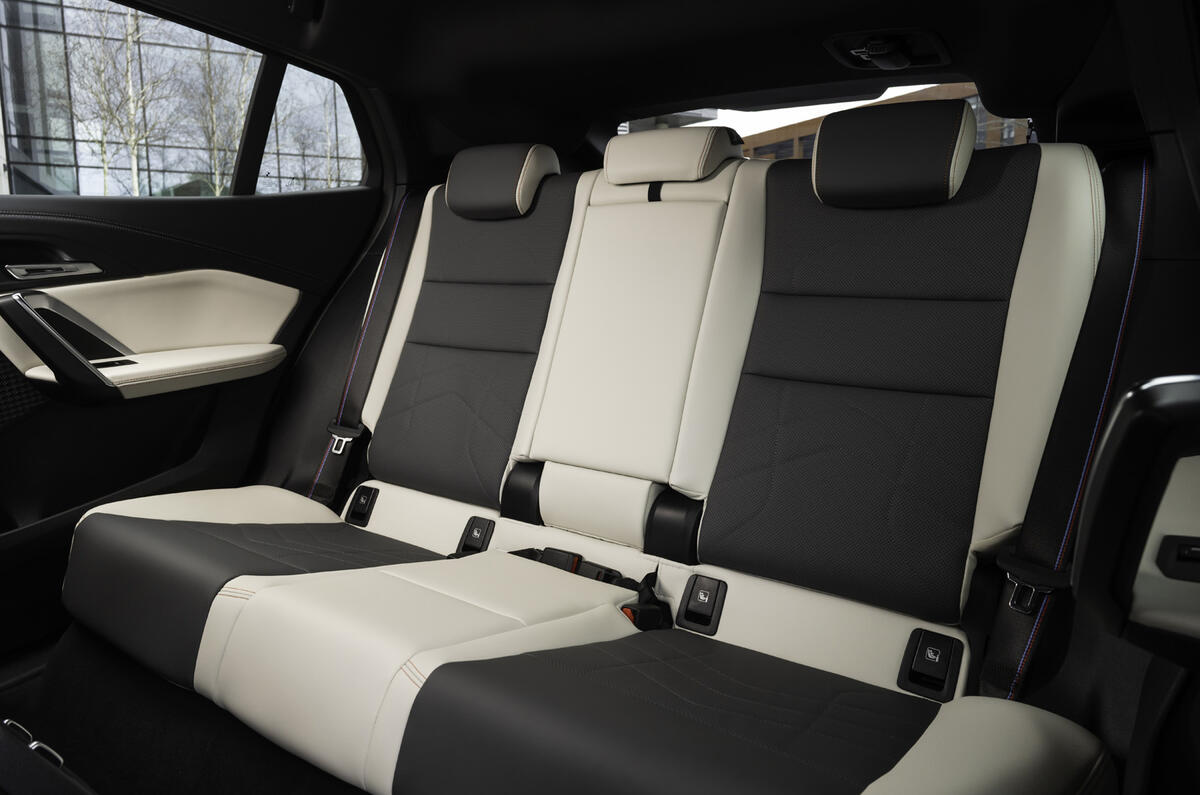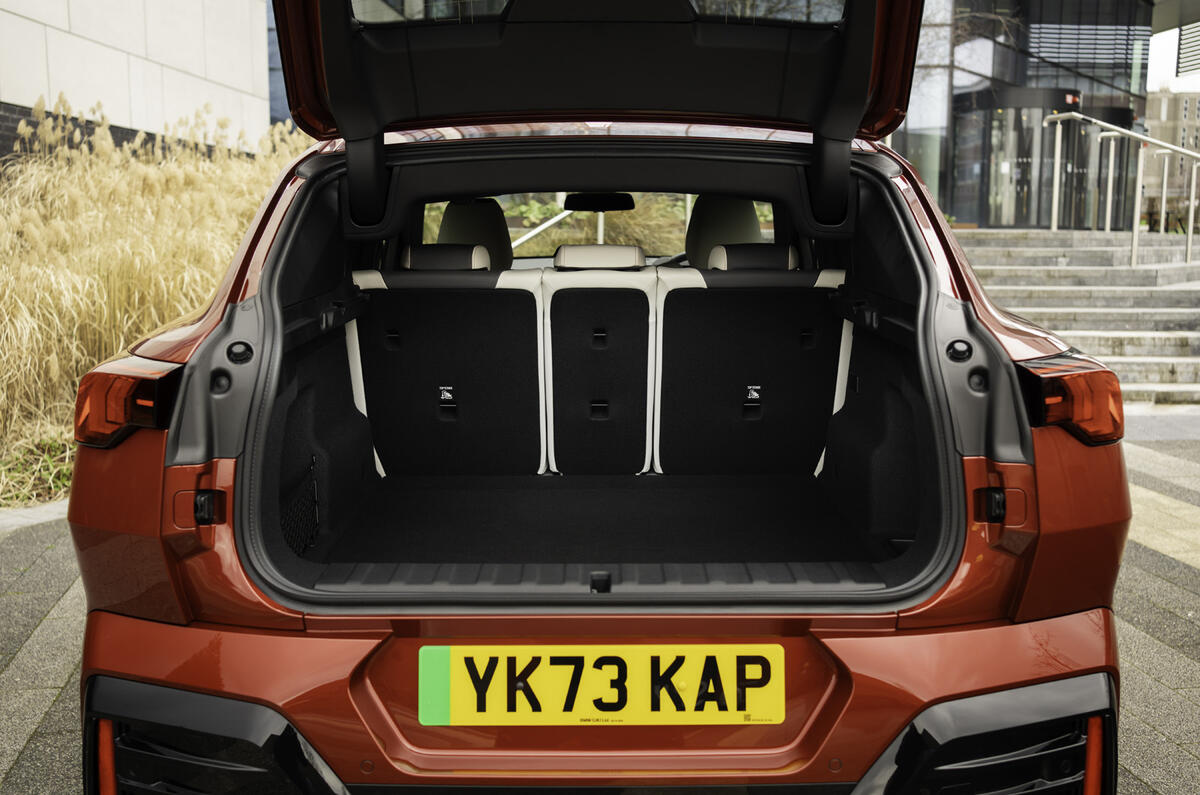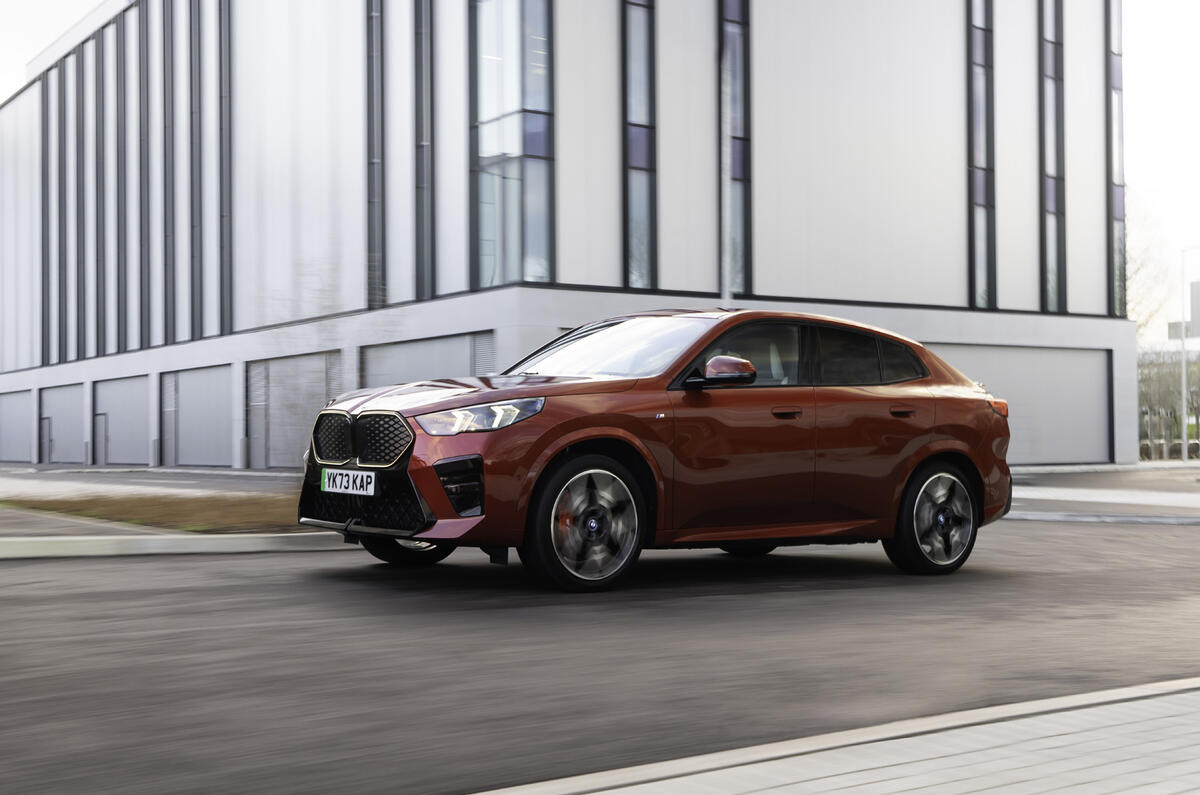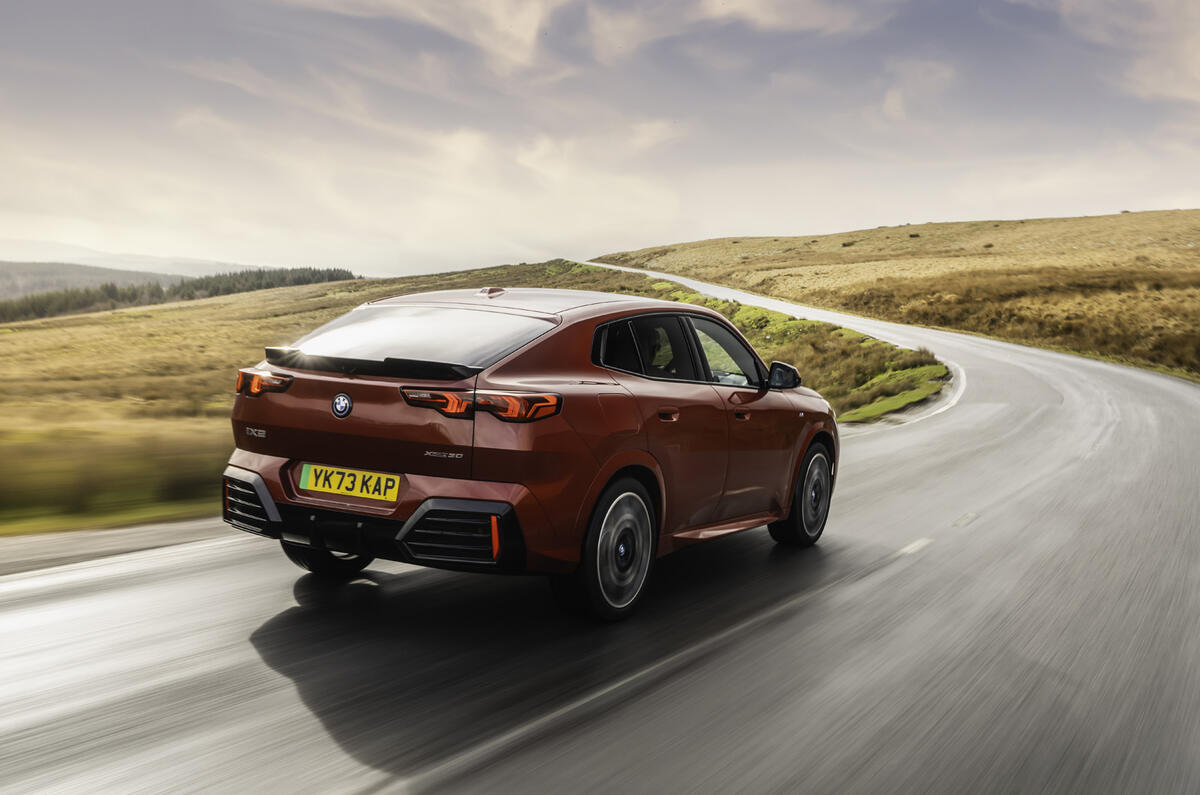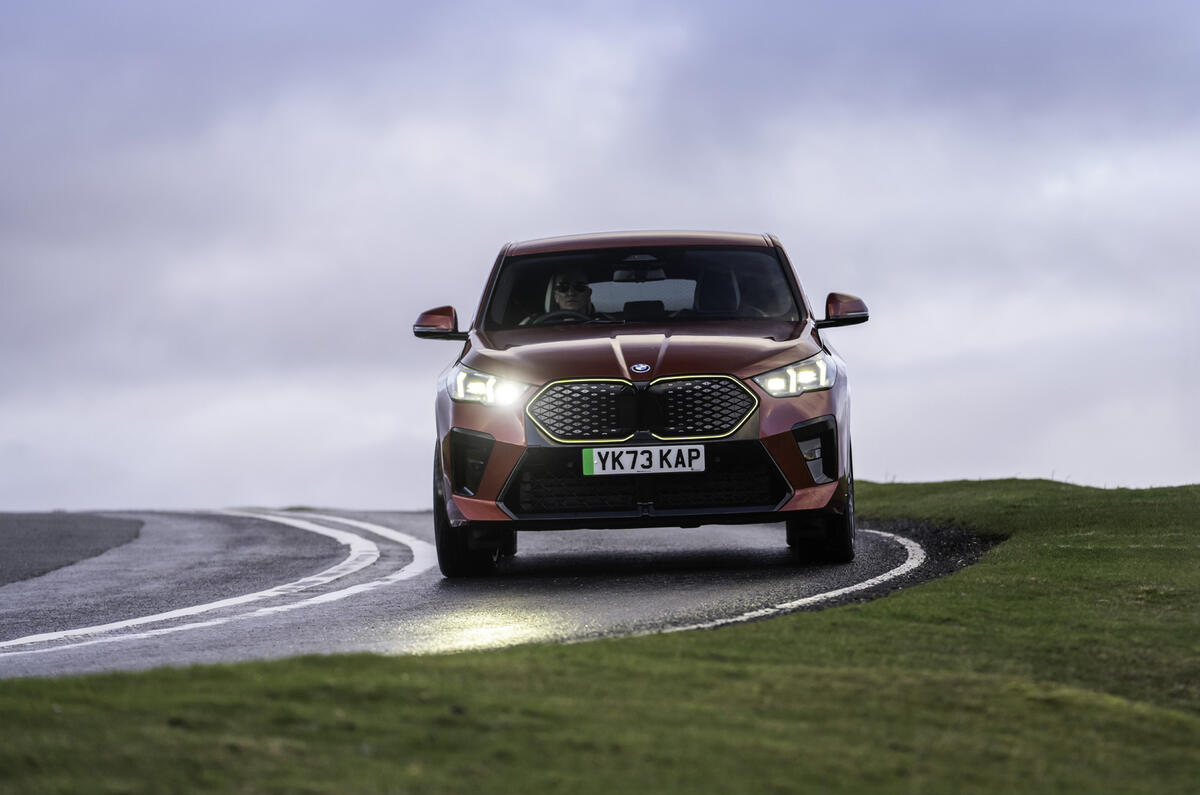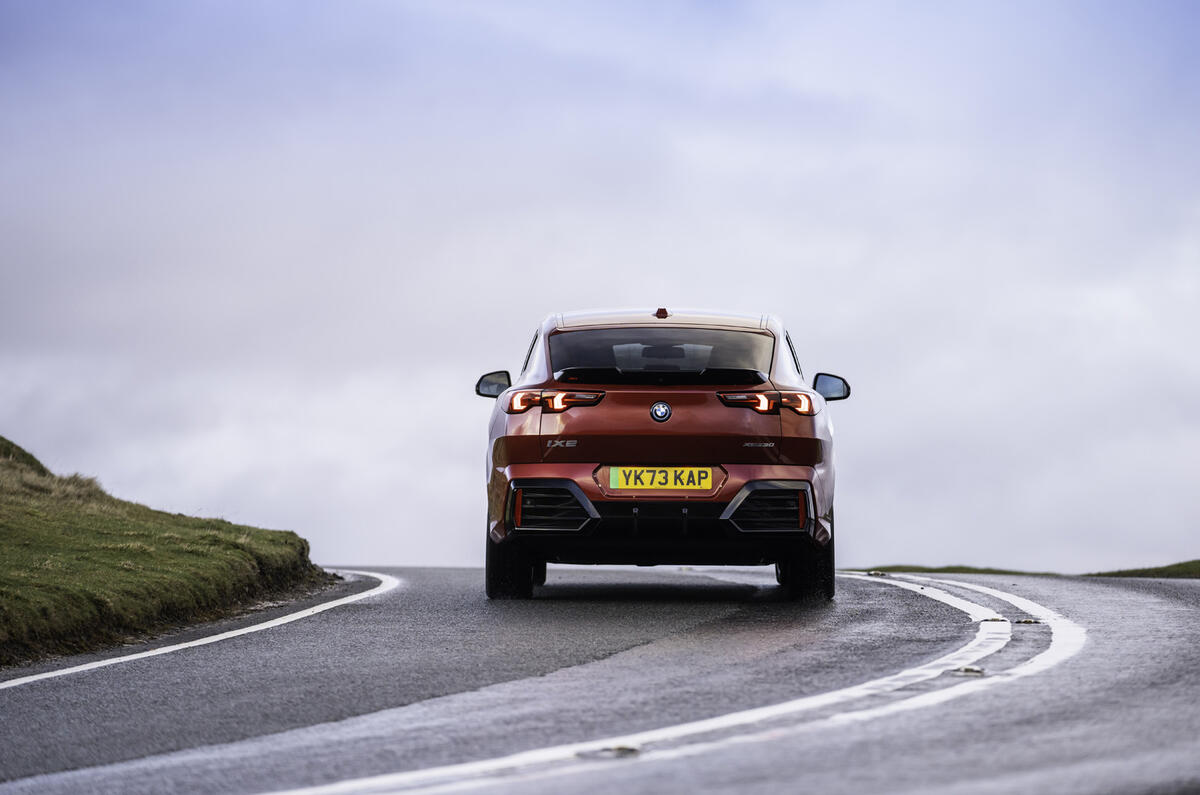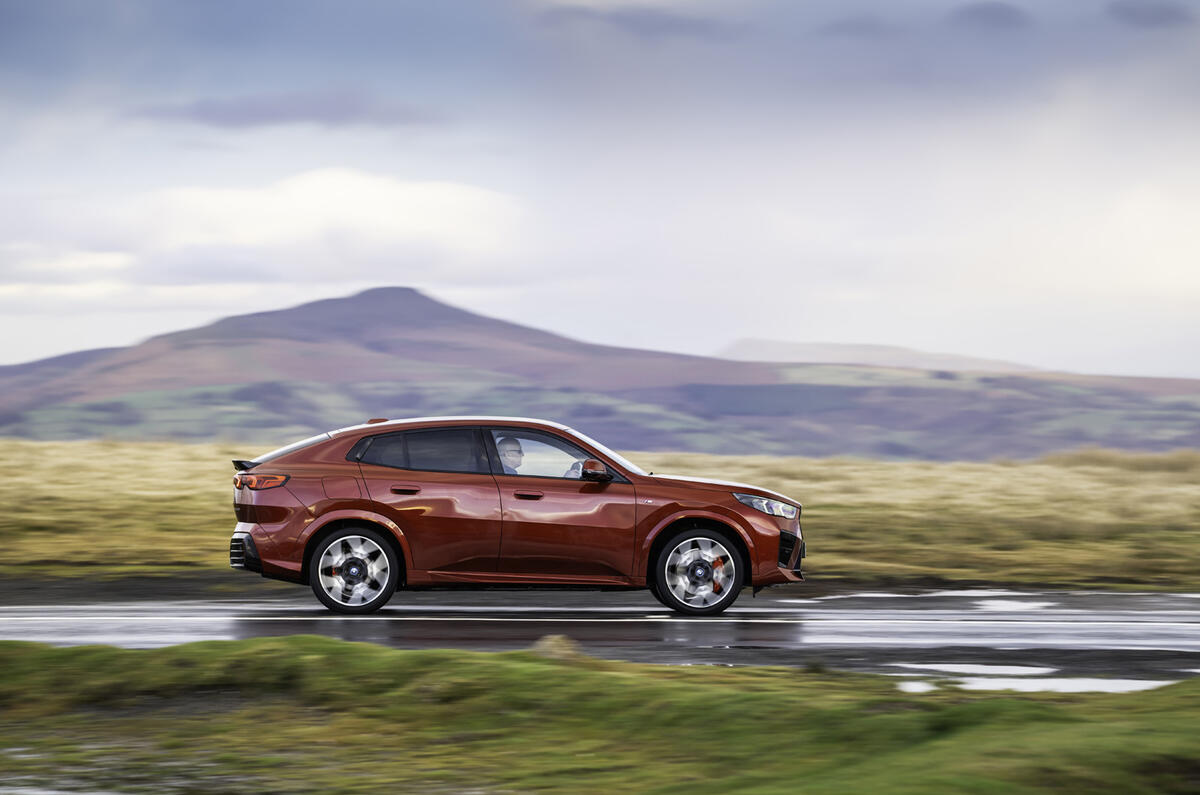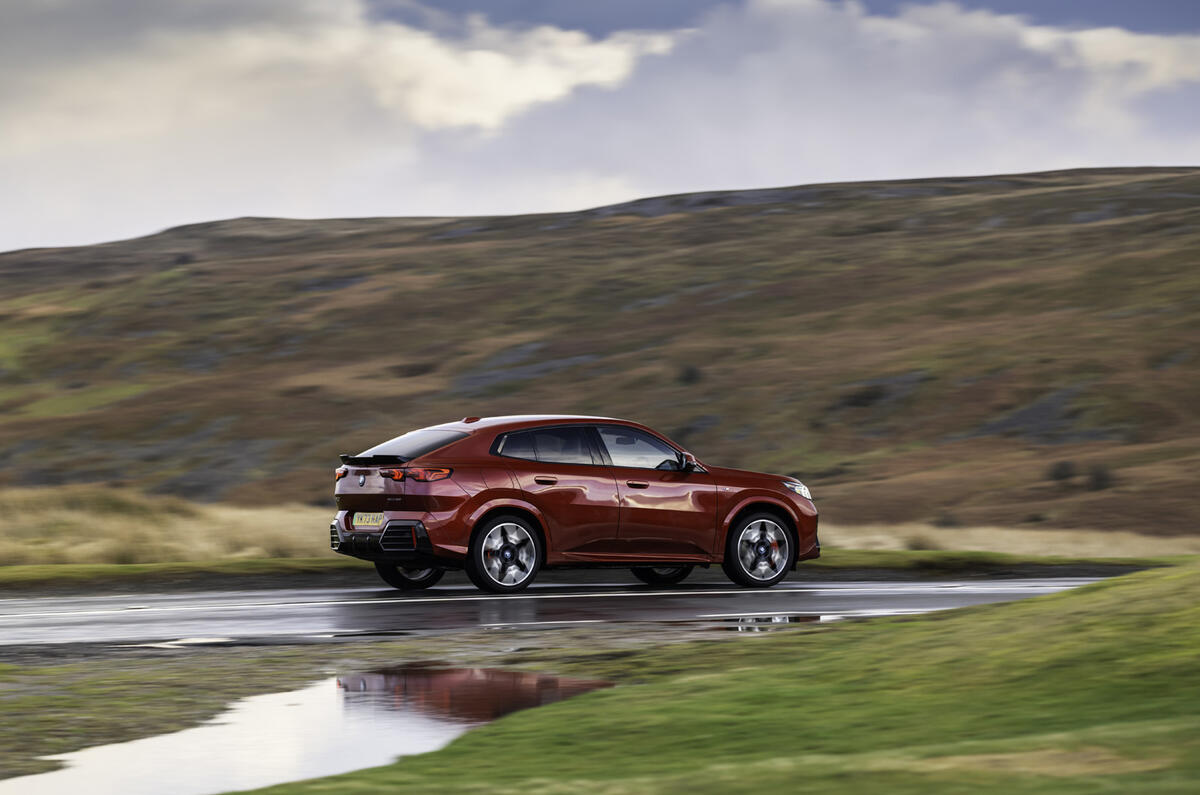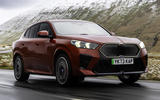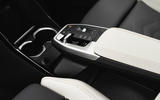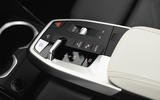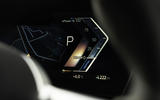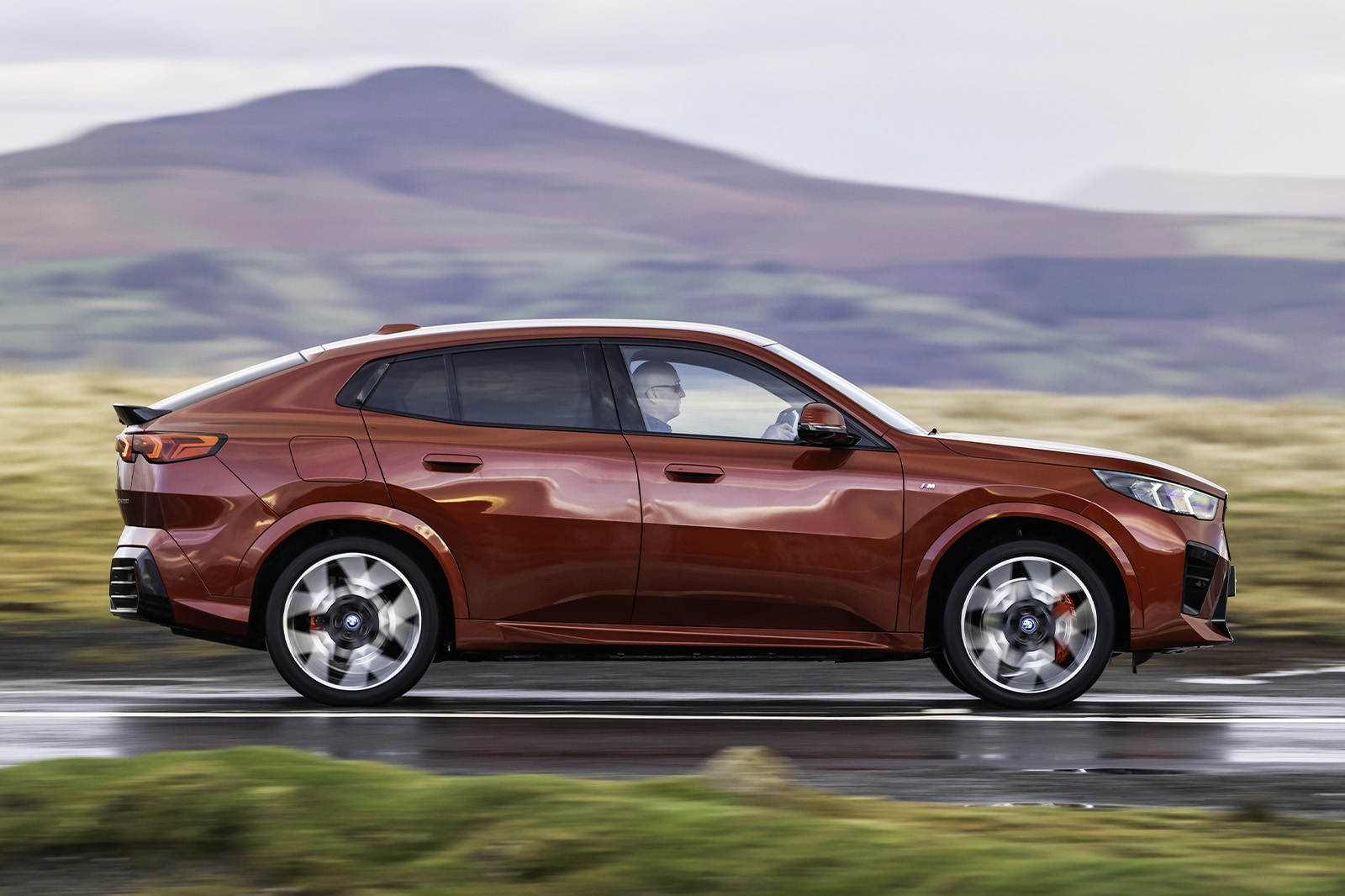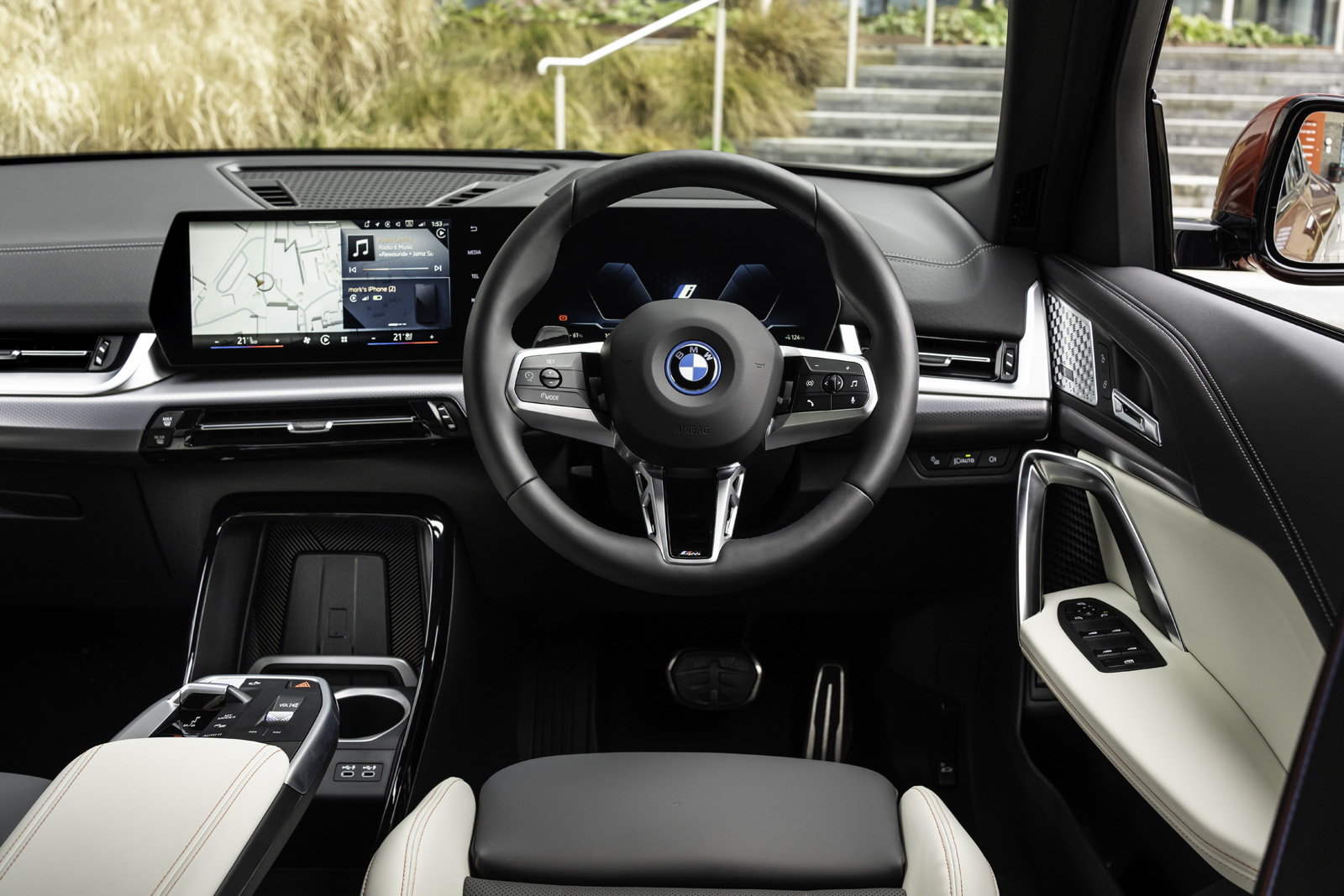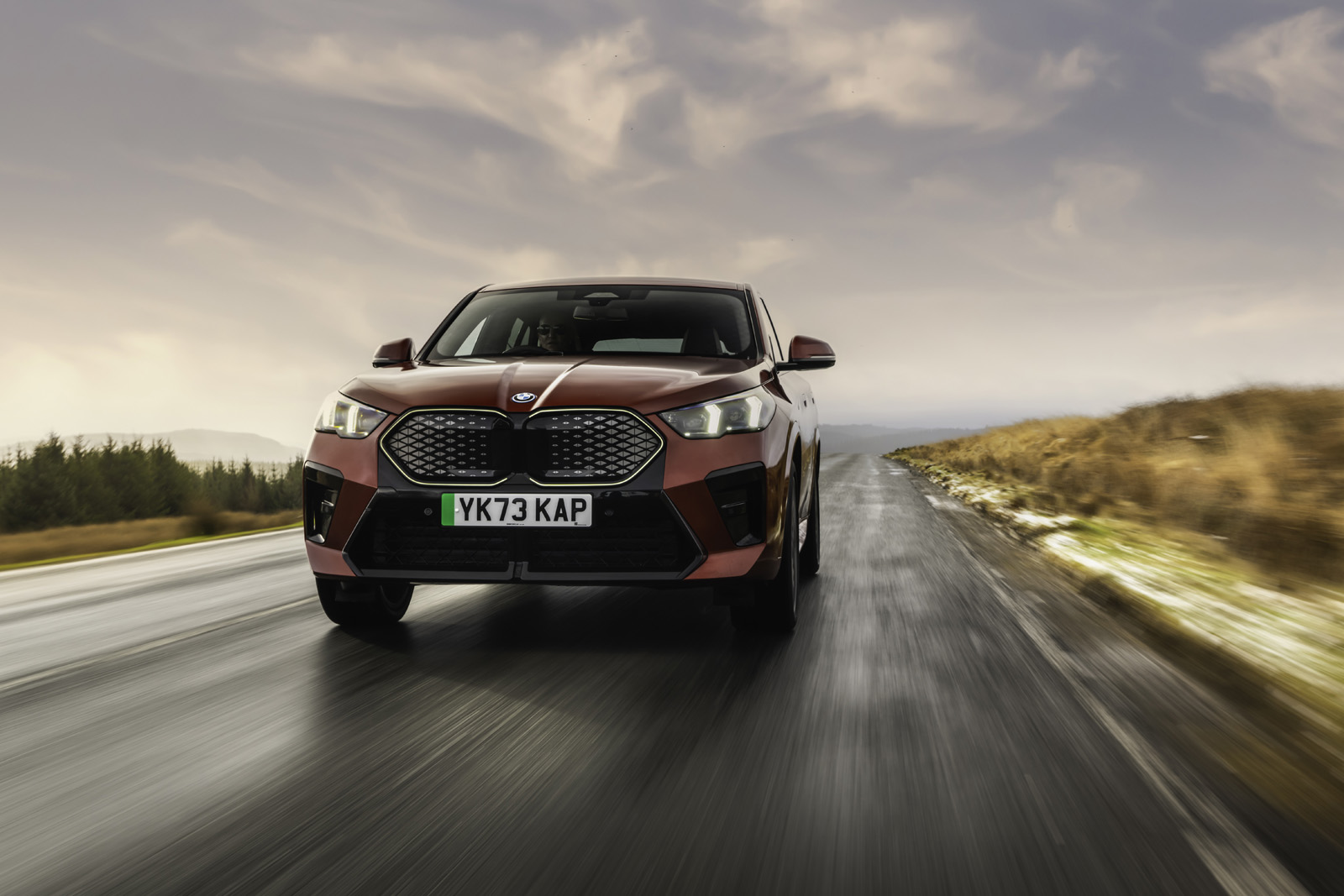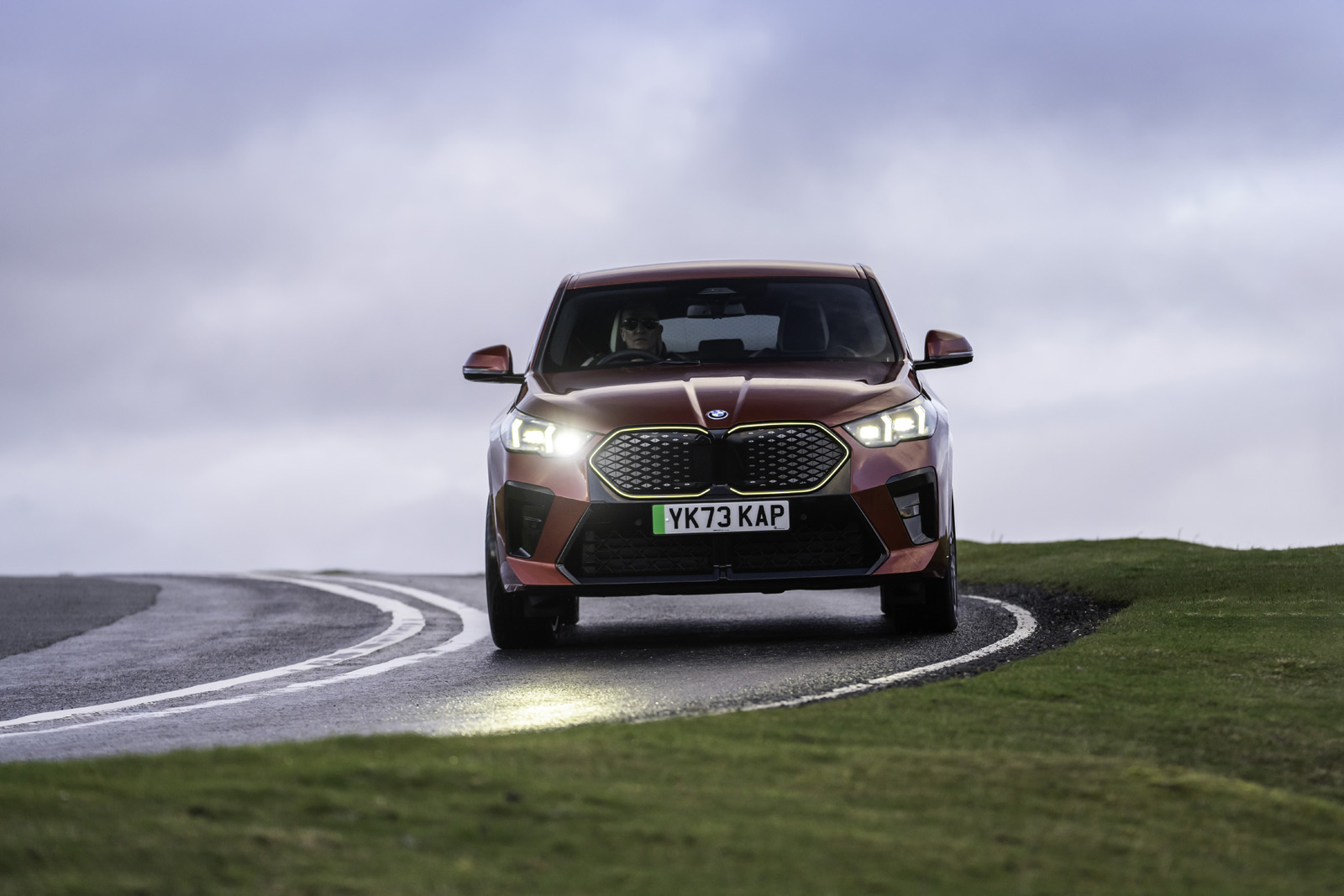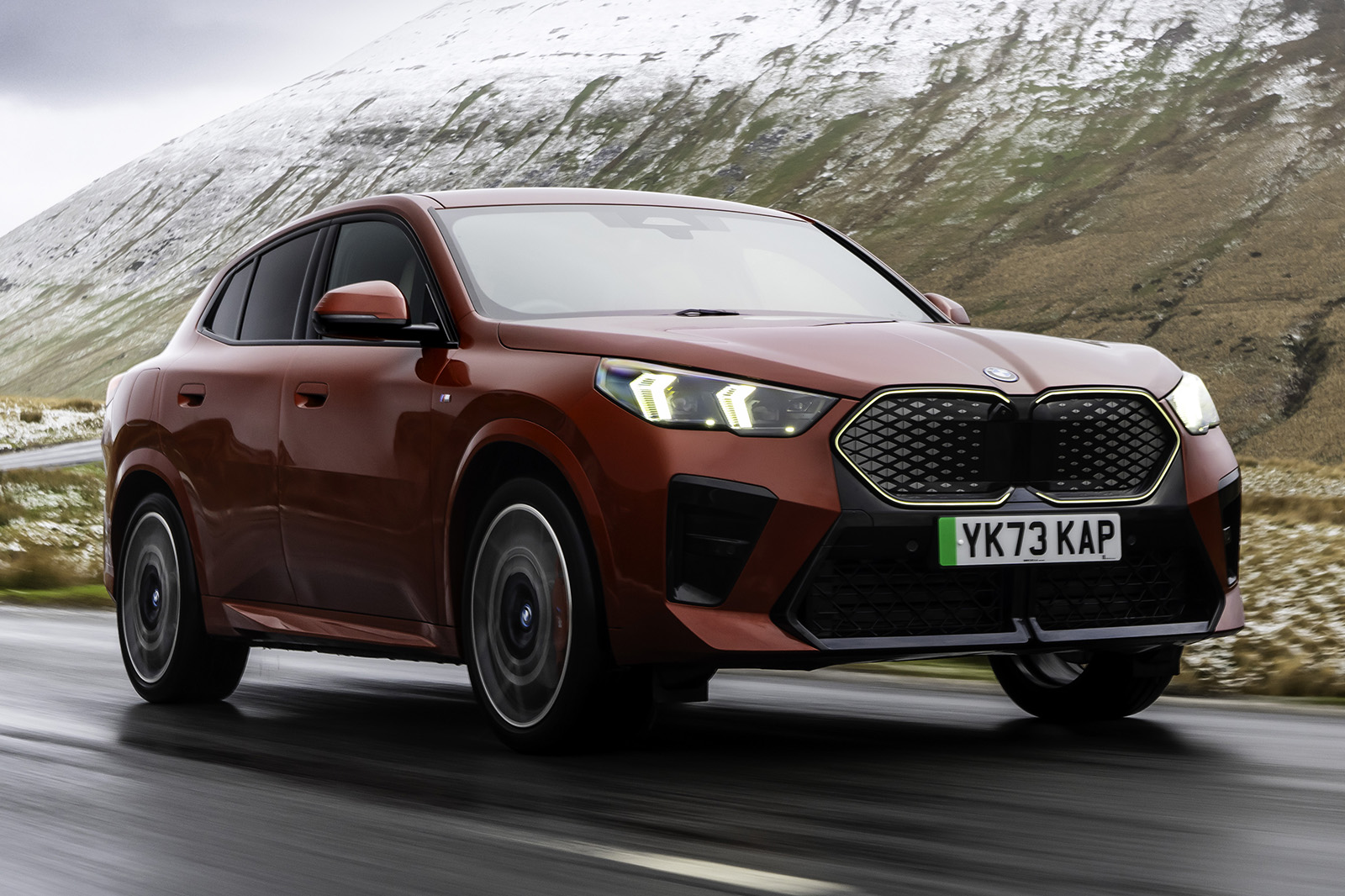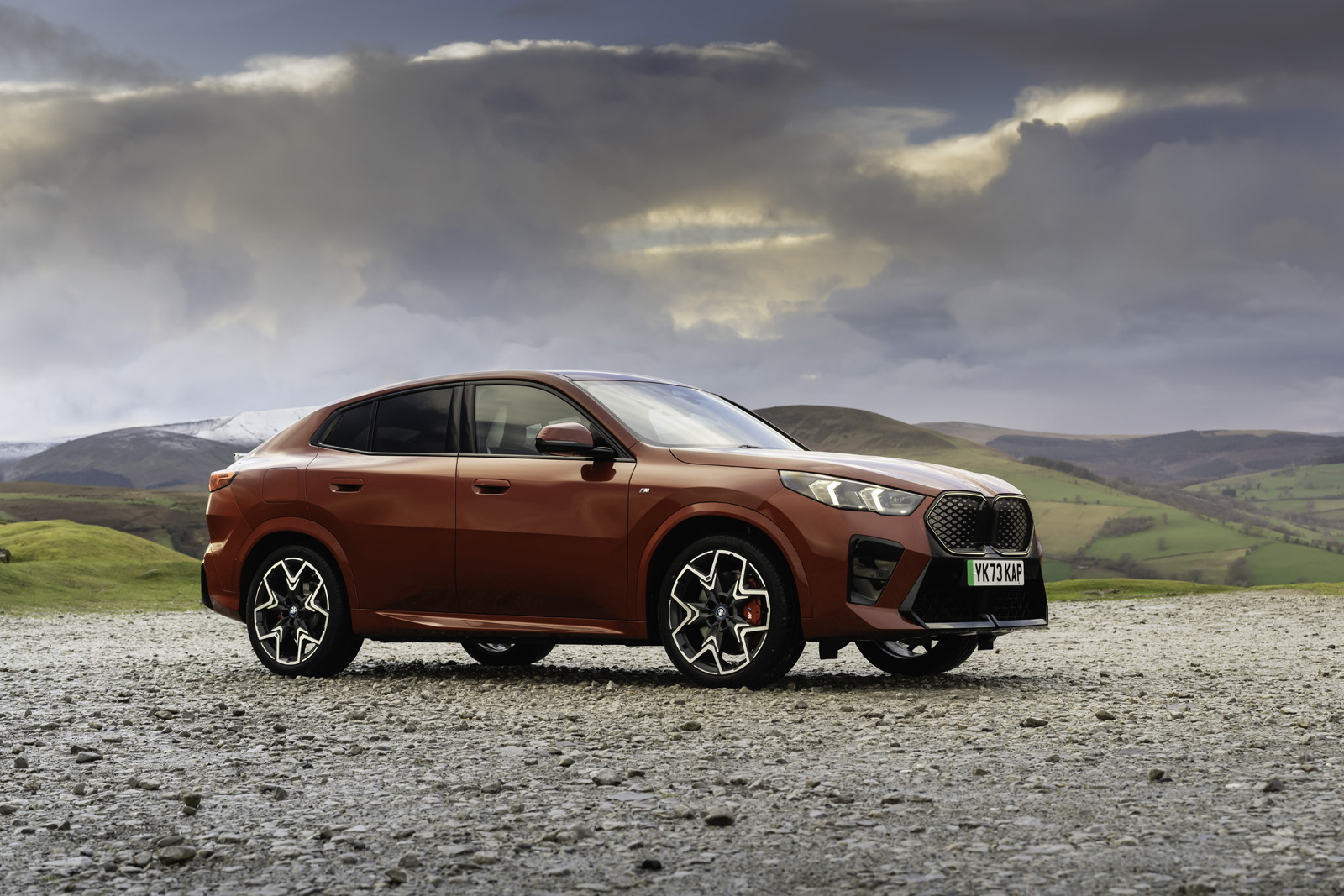Compact BMWs have often evidenced a bit of an inferiority complex in their dynamic personae over the years. The high-set, transverse-mounted engines that the likes of the BMW 1-Series, 2-Series Gran Coupe and X1 typically use mean they don’t have the perfect weight distribution and native rear-drive that the firm is so renowned for, which has lead the sporty ones especially to sometimes over-compensate with overly-firm M Sport suspension, reactive ride and steering; just a slightly try-hard vibe.
Electrification would, you might imagine, be an opportunity to start from a clean slate; but BMW is, for now at least, adapting existing combustion-engined platforms for most of its EVs - and that means this iX2 uses a modified version of the same ‘UKL’ platform that the regular ICE X2 uses. Its main drive motor goes in the front, and its entry-level eDrive20 version is exclusively front-driven - even if this xDrive30 version gets another motor at the rear, and four-wheel drive,
This is the car that BMW is offering up against the Polestar 2, Audi Q4 E-tron and Tesla Model Y, then. Munich is clearly hoping that characteristically sporty styling will sell it, which explains the distinctly over-egged bi-plane rear wing of our test car. And yet the appeal of the car’s fundamental profile and stance just isn’t a patch on the best-looking electric ‘crossover coupes’ in this class.
At 4554mm, the iX2 is 194mm longer than the (non-electric) previous generation X2, and 54mm longer than the current iX1. It offers a wheelbase of 2692mm, with the wheels pushed towards each corner in order to maximise interior space. The boot is a respectable 525 litres big, although that is smaller than the petrol X2 due to the batteries.
In the iX2, the UKL platform features a battery pack runs beneath the floor, and there's the option of an electric motor on each axle. The entry-level eDrive20 M Sport, set to arrive in March, will feature a single motor mounted on the front axle to drive the forward wheels. That will offer 201bhp and 184lb ft of torque.
The top-spec xDrive30 M Sport3 adds a second hybrid synchronous 'e-motor' on the rear axle, for a combined 308bhp and 364lb ft of torque. That makes it plenty fast enough, and suits the sportier ambitions of this car more than its boxier iX1 sibling.
Whichever powertrain you plump for, the iX2 uses a 66.5kWh (64.7kWh usable) battery, which gives the twin motor model an official range of up to 266 miles, rising to 297 miles for the eDrive20. Thanks to the iX2’s sleeker body, that’s six whole miles more than the twin-motor iX1.
The iX2’s 130kW peak charging speed (identical to the iX1’s) is a match for the Audi Q4 E-tron but still off the pace set by rivals such as the Genesis GV60 (260kW).





